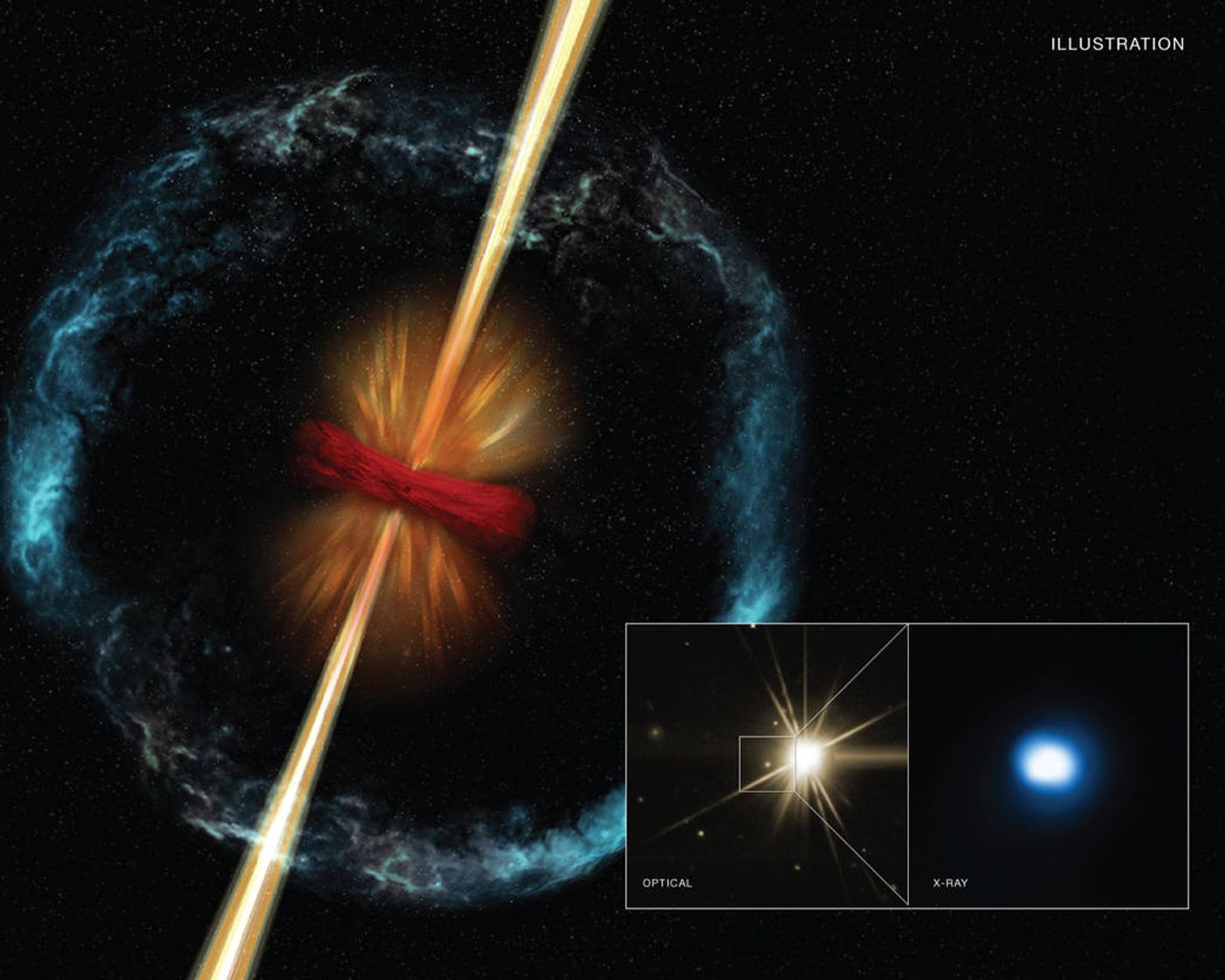Astronomers Shed Light on Short Gamma Ray Bursts
Gamma Ray Bursts (GRB) are some of the brightest and most powerful, but also some of the most misunderstood quandaries of physics that exist in our universe.
Scientists believe that shorter versions of GRBs the result of two colliding neutron stars or a neutron star colliding with a black hole in distant space. When the two powerful spatial bodies collide, all kinds of pandemonium break loose. Intense gamma rays and X-rays are shot out of the event, and can sometimes be observed.
They happen so far away that they’re often difficult to observe, and it also makes things difficult when you can’t predict where they’re going to happen. By chance, astronomers happened to see one occur some 3.9 billion light years away in September of 2014 and studied it with the Gemini Observatory telescope in Hawaii.
The findings were published in the Astrophysical Journal and can be read on arXiv.org.
Lasting about two seconds, the large blast of gamma rays and X-rays was observable because the very narrow 5-degree-angle light rays were aimed right towards Earth. After some time, the intensity of the rays decreased as the energy was emitted and used up.
It was once believed that observing these rays was one of the only ways that we could see GRBs because without seeing the light rays, they come off as invisible in deep space. This, of course, had its challenges. With such a small angle of light to rely on, and most rays not facing the Earth, most GRBs go unnoticed.
Nevertheless, one thing that’s been coming into focus lately are gravity waves, and it’s believed that the collision of large spatial objects like neutron stars on neutron stars or neutron stars on black holes produce these rippling effects, which may one day be better found with gravity wave-detecting equipment, even when the gamma rays and X-rays aren’t facing the Earth.
Despite how rare it is to observe a GRB, this particular instance gave astronomers a front-row seat and helps us to better understand how they work and what to look for.
Astronomers are very interested in GRBs, which are believed to be some of the most powerful sources of energy in our universe, as it’s also thought that these incredible sources of energy may actually produce heavy elements that are heavier than iron, like gold.
Will the secret behind GRBs be revealed as we dig deeper into gravity wave observations in the future? Only time will tell…
Source: NASA









